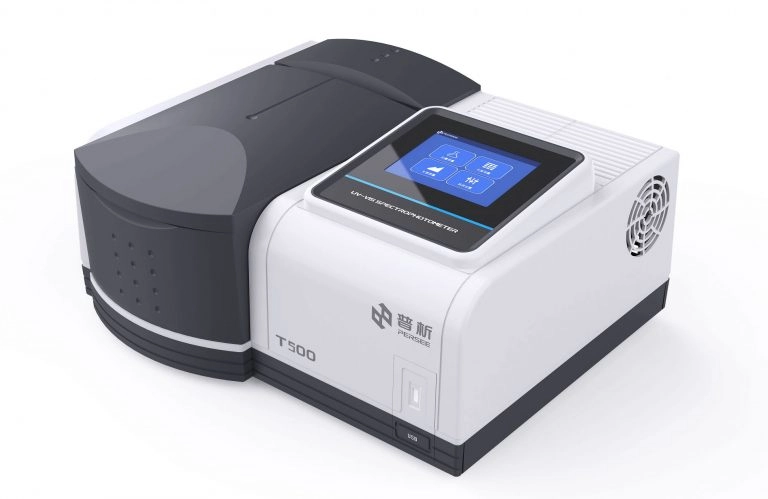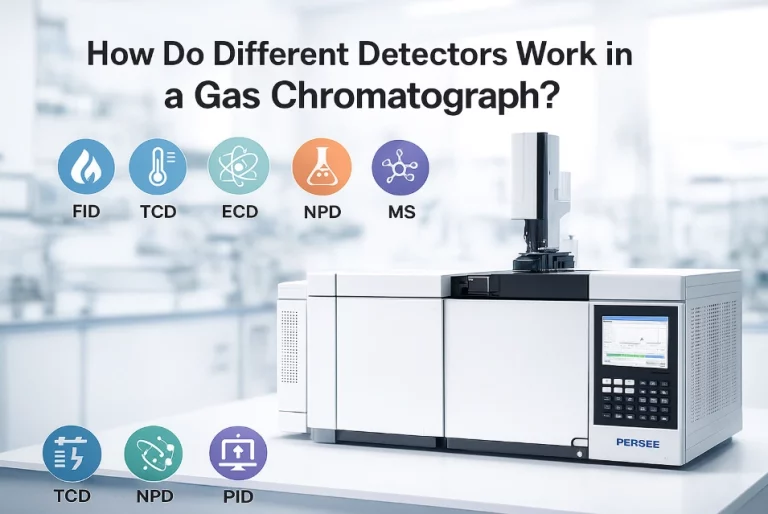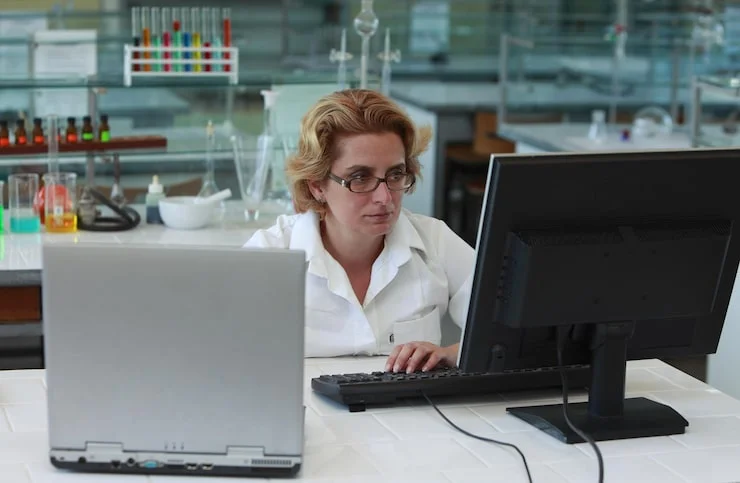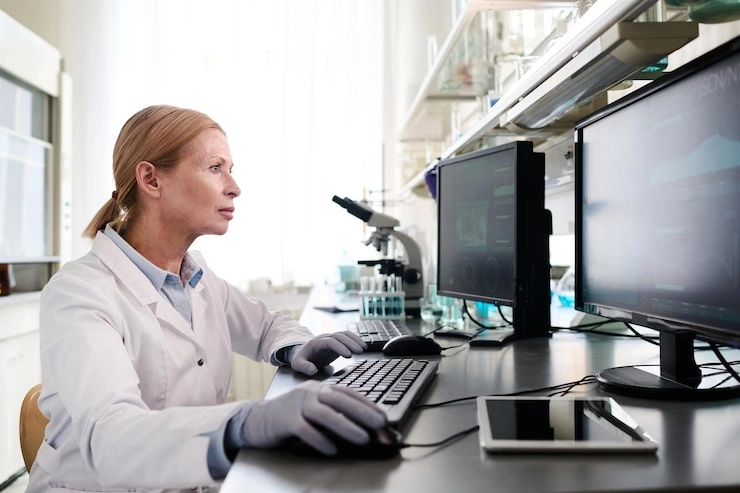
In today’s chemical analysis, we have something called GC-MS. It stands for gas chromatography and mass spectrometry, and it has totally changed how we find and measure chemical materials. This strong method combines two things. First, it uses the separating power of gas chromatography. Then, it adds the substance-finding power of mass spectrometry. This gives it amazing precision, focus, and flexibility. GC-MS plays a vital part in making sure results are accurate and dependable. This is true for all sorts of work, like checking for pollution, testing medicines, or looking at crime scene evidence.
Overview of Gas Chromatography and Mass Spectrometry
Gas chromatography (GC) and mass spectrometry (MS) are two different tools for analysis. They work together well to help study chemical compounds.
Basic Principles of Gas Chromatography
Gas chromatography, or GC, is a method used to separate different compounds in a complex mix. It works best with substances that turn into gas easily. The main idea is simple. The sample’s parts divide themselves between a still material (the stationary phase) and a moving gas (the mobile phase). First, the sample is heated until it becomes a vapor. Then, a harmless gas pushes it through a special tube called a column. This column holds the stationary phase. Some parts of the sample will stick to this phase more tightly. These parts move slowly. Other parts have a weaker grip, so they move much faster. That’s how the different compounds get separated.
But getting a perfect separation isn’t always easy. In real-world use, you need very careful control. The column’s temperature and the gas flow must be kept steady. Even small changes can mess things up. What happens is that these shifts can change the retention time, which hurts the accuracy of your results.
Core Functionality of Mass Spectrometry
Mass spectrometry (MS) is all about figuring out what a compound is. It does this by looking at its mass-to-charge ratio (m/z). First, molecules are given an electrical charge, which is called ionization. This process often breaks them into smaller, charged pieces. Next, a part called a mass analyzer separates these pieces. Finally, a detector measures how many of each piece there are. This creates a special chart called a mass spectrum. You can think of it as a unique “fingerprint” for the molecule.
To get a clean and believable “fingerprint,” the material going into the mass spectrometer has to be very pure. This is very important. For example, if the GC separation step didn’t work well, you might have a problem. Two or more compounds could enter the machine at the same time. This is called co-elution. When that happens, the mass spectrum is a messy mix of everything, and it becomes hard, or even impossible, to tell what you’re looking at.
How GC and MS Work Together in Analytical Applications
GC-MS smoothly combines these two systems into one. Here’s how it works. First, the GC does its job and separates the mix into single parts. As each pure part leaves the column, it flows right into the mass spectrometer. The MS then acts like a very specialized detector. It gives a clear identification and details about the compound’s structure.
Instrumentation and Operation
To really get how GC-MS works, we need to look at its main parts. We also need to understand the problems that can come up with them.
Components of a Gas Chromatograph
- Carrier Gas System: This part provides a harmless gas, like helium or nitrogen. It has controls and filters to make sure the gas flow is steady, clean, and dry.
- Injection Port and Column: The injection port is a hot chamber where the sample is turned into a gas. This is a key first step, but it’s also where problems often start. For instance, things like leftover gunk, leaks, or bad heating can cause issues. These problems can lead to messy peak shapes, inconsistent results, and can even break down the sample itself. The column is the real center of the GC. It’s usually a very long, thin tube where the actual separation happens. One common problem is called column bleed. It happens at high temperatures and creates a lot of background noise. This makes it very hard to spot tiny amounts of a compound.
- Oven Temperature Control: A special oven lets you set an exact temperature program for the column. This is important because it allows the machine to separate many different kinds of compounds, each with its own boiling point.
質量分析計の構成要素
- Ion Source: This turns the neutral molecules coming from the GC into ions, which have a charge. The most popular method is Electron Ionization (EI). There are also gentler methods, like Chemical Ionization (CI), that are less likely to break up the main molecule.
- Mass Analyzer: This part separates the new ions based on their m/z ratio. Some common kinds are Quadrupole (QMS) and Time-of-Flight (TOF).
- Detector System: This system sees the separated ions and turns that information into an electrical signal.
Data Output: Chromatograms vs. Mass Spectra
The GC gives you a chromatogram. This is a graph that shows signal strength over time. The MS gives you a mass spectrum. This graph shows how much of each ion you have based on its m/z. When you use GC-MS, the usual output is a Total Ion Chromatogram (TIC). It looks a lot like a regular GC chromatogram. Analysts can use the TIC to create something else: an Extracted Ion Chromatogram (EIC). This lets them focus on a single m/z value. What’s more, it helps them pull out the signal of one specific compound from a messy background. It can be tough for the software to find and measure peaks correctly, especially if the baseline is shaky or there’s a lot of noise. This means the software needs to have really good algorithms.
Common Challenges in GC-MS Analysis and Key Control Points
GC-MS is a great tool, but people who use it often run into a few common problems during everyday work:
- Inconsistent Results: This often happens because the temperature or the gas flow isn’t steady.
- Not Sensitive Enough: A lot of background noise can hide the signals from the compounds you’re looking for. This noise can come from column bleed or gunk in the system.
- Bad Peak Shape: When peaks have a “tail” or are pushed forward, it makes it hard to get accurate measurements.
- Dirty System: Leftovers from old samples can show up as “ghost peaks.” This carryover can make you think a compound is there when it’s not.
To beat these challenges, you need more than just good methods. You also need a solid and well-made machine. This is the key to getting good results.
The PERSEE G5 GC System: A Stable Foundation for High-Precision GC-MS Analysis
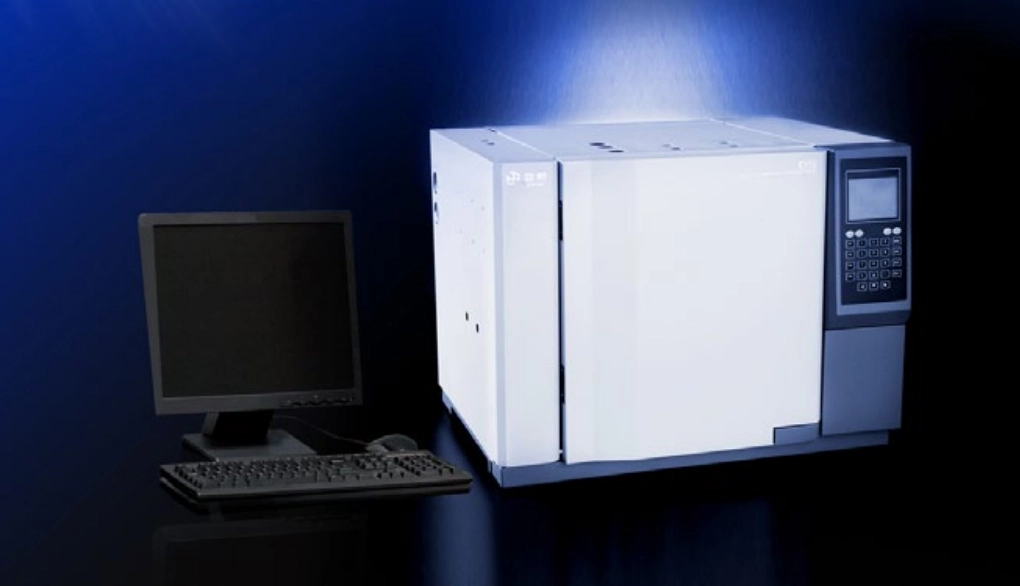
You need a top-quality gas chromatograph to get the most out of your mass spectrometer. A really good GC system tackles the main problems of stability, dependability, and sensitivity right at the start, in the separation step. Thus, it makes sure the whole GC-MS process gives you high-quality data.
Addressing Reproducibility with Unmatched Thermal Performance
Temperature changes can cause retention time to drift, which is a big problem. To fight this, the PERSEE G5 series GC has a special oven design and very exact temperature control programs. This provides amazing temperature stability and evenness. What does this mean for you? It means you get very consistent results, so you can be confident in every analysis you run.
Enhancing Sensitivity by Minimizing Background Noise
When you’re looking for tiny amounts of something, you need a very low background signal. The G5 system helps with this. It works with good, low-bleed columns. Besides that, it also has a better gas path and top-notch parts to cut down on system noise. The result is a much flatter baseline. You also get a better signal-to-noise ratio. So that you can find tiny amounts of compounds that you might have missed before.
Ensuring Accuracy with Superior Peak Shape
The G5 system has a special injection port and liner that have been treated to be inert. This is important. It greatly reduces how much active compounds stick to the surfaces. This design makes the peak shapes much better. It also stops tailing. As a result, your measurements will be more accurate, which is very important in fields with strict rules.
A better gas chromatograph is the best guarantee for the mass spectrometer’s amazing identification power. First of all, the PERSEE G5 GC system solves the main problems of stability, dependability, and sensitivity. By doing this at the very beginning of the process, it protects the quality of the GC-MS data from start to finish. This gives scientists and lab workers the confidence to handle any analysis.
Summary of Key Differences Between Gas Chromatography and Mass Spectrometry
These two methods work together perfectly in one machine. However, it’s helpful to understand what each one does on its own. This knowledge helps you use them in the best way for your specific goals.
| Attribute | Gas Chromatography | Mass Spectrometry |
|---|---|---|
| Core Function | Separates complicated mixes | Finds and figures out the structure of compounds |
| Prerequisite | Substances must turn into gas easily and be stable at high heat | Substances must be able to gain a charge |
| Mechanism | Works by how parts divide/stick to a surface | Works by using the mass-to-charge ratio (m/z) of ions |
| Target Analytes | Organic materials that turn to gas easily | Many types of molecules that can be given a charge |
| Output Data | Chromatogram (Signal Strength vs. Time) | Mass Spectrum (Amount vs. Mass-to-Charge Ratio) |
| Information | Gives you retention time and relative amount | Gives you molecular weight, what elements are in it, and pieces of its structure |
| Limitations | Can’t test materials that don’t turn to gas or break down with heat; not good at identifying things by itself | Has trouble testing complicated mixes on its own because the signals get jumbled |
FAQs:
Q1: Why does gas chromatography only work for compounds that turn to gas easily?
A: The method depends on turning samples into a gas before they are separated in hot columns. Because of this, substances that don’t turn to gas easily or that break down under heat can’t be tested directly. They would need extra preparation steps first.
Q2: Why do we put gas chromatography and mass spectrometry together?
A: Gas chromatography is great at separating all the parts of a mix. But mass spectrometry is what gives you a detailed identification. It looks at the patterns of how molecules break apart. This allows for a very sure confirmation of what a substance is. You couldn’t get that level of certainty by using either tool by itself.
Q3: Can GC-MS find very small amounts of a substance?
A: Yes, it can. It’s possible to find things down to parts-per-billion (ppb) levels, or even smaller amounts. This is especially true if you use special modes like Selected Ion Monitoring (SIM) or advanced setups like a Triple Quadrupole Mass Spectrometer (TQMS).

